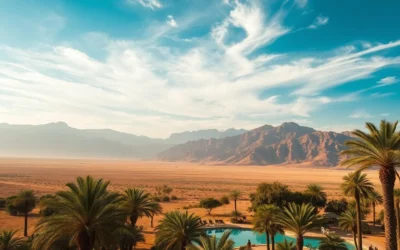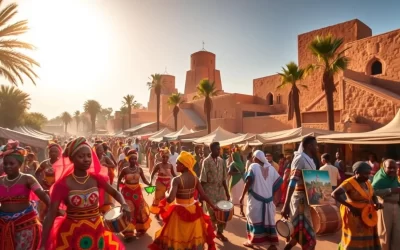✓ Accommodations✓ Flights✓ Rental Cars✓ Tours & Activities ✓ Tours & Activities
When you’re preparing for an adventure in Chad, understanding the country’s diverse climate is crucial. The country’s varied landscapes, from the stunning Ennedi Plateau to the expansive Zakouma National Park and the picturesque Lake Chad, offer a unique experience that is heavily influenced by the time of year you visit.
The climate in Chad varies significantly, ranging from desert in the north to tropical with a wet season in the south. This diversity means that the best time to visit depends on your travel plans and the activities you’re interested in, whether it’s wildlife viewing, desert expeditions, or cultural experiences.
By choosing the right season for your trip, you can ensure a more enjoyable and fulfilling experience in this off-the-beaten-path destination. Whether you’re looking for the dry season’s better accessibility or the wet season’s lush landscapes, timing your trip correctly is key to making the most of your time in Chad.
Understanding Chad’s Climate Zones
Chad’s diverse geography gives rise to three distinct climate zones, each with its unique characteristics. This diversity significantly influences the best time to visit different parts of the country.
The Desert North
The northern part of Chad is dominated by the Sahara Desert, including the Tibesti Mountains. This region experiences extreme temperatures and very low rainfall, less than 50 millimeters (2 inches) per year. The harsh climate and breathtaking landscapes make it a unique destination.
The Semi-Arid Central Region
The central region of Chad has a semi-arid climate, with rainfall reaching up to 200 mm (8 in) annually. This area experiences a short rainy season, making it relatively dry for most of the year. The transitional climate of this region affects the time you can visit.
The Tropical South
The southern part of Chad has a tropical climate, with significant rainfall exceeding 1,000 mm (40 in) per year. The rains occur from May to early October, with some showers starting as early as April in the far south. This region’s weather and temperatures create lush landscapes but also challenging travel conditions.
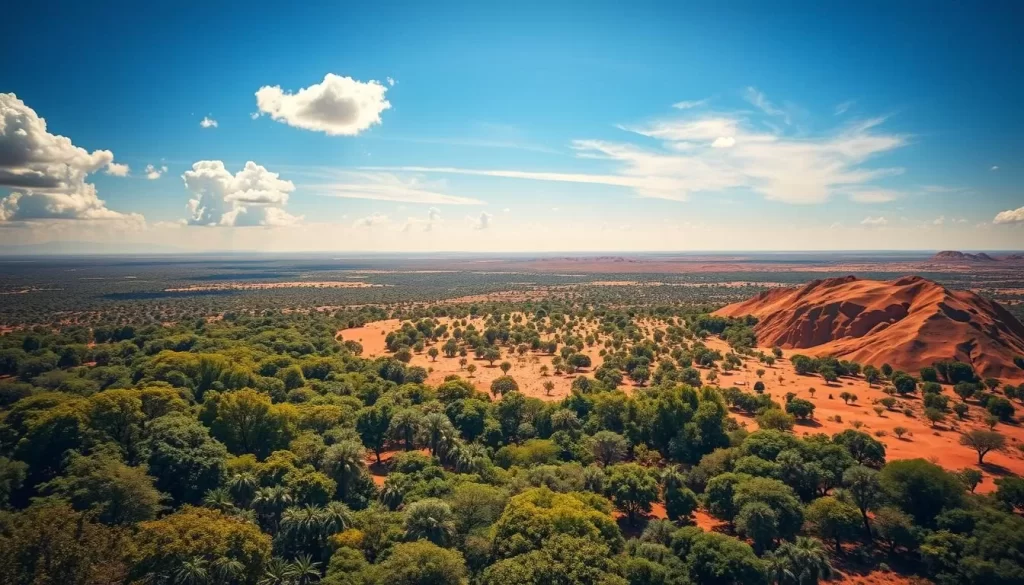
Understanding these climate zones is essential for planning your trip to Chad, as the season and climate vary significantly across the country and region. Each zone’s characteristics will help you determine the ideal time to visit Chad.
Dry Season: The Prime Time to Visit Chad
For those looking to explore Chad’s vast and varied landscapes, the dry season is the best time to visit. The dry months from October/November to March offer ideal conditions for travel, with comfortable temperatures and accessible roads.
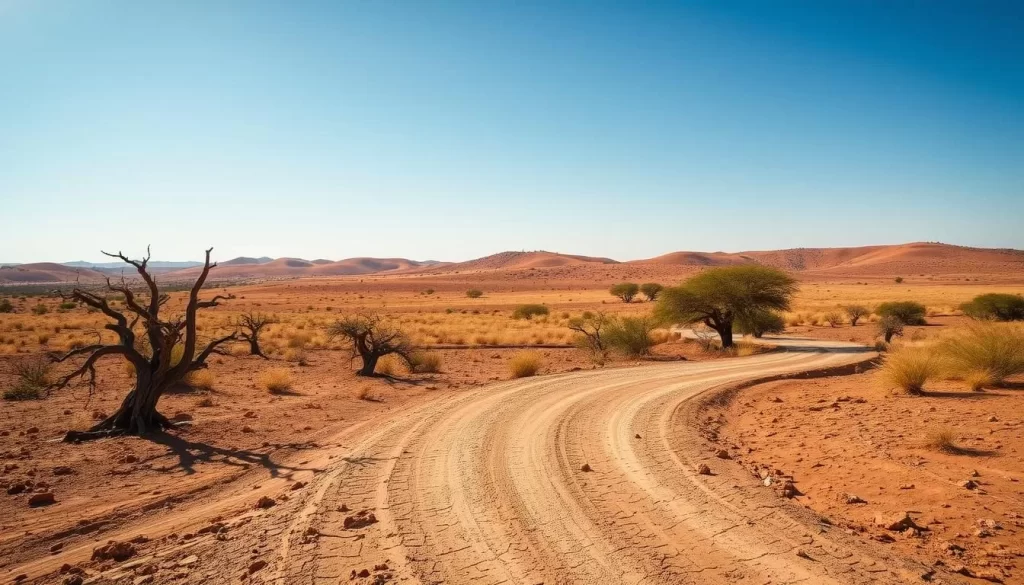
The dry season transforms Chad into a traveler’s paradise, with minimal rainfall and lower humidity making it perfect for outdoor activities such as hiking, wildlife viewing, and cultural experiences.
November to February: Ideal Weather Conditions
From November to February, Chad experiences its most comfortable weather, with clear skies and pleasant temperatures. This period is ideal for exploring both the desert north and the more tropical south, making it a great time to visit Chad.
March: End of Dry Season Adventures
In March, temperatures begin to rise, but the landscape remains accessible before the onset of the rainy season. This makes it an excellent time for wildlife viewing, as animals congregate around limited water sources, making them easier to spot during game drives.
October: Early Dry Season Benefits
October marks the beginning of the dry season, bringing refreshed landscapes after the rains and increasingly favorable road conditions. It’s an excellent time to explore Chad’s diverse regions, from the Sahara Desert to the lush greenery of the south, while enjoying comfortable travel conditions.
Wet Season Considerations: May to September
Visiting Chad during the wet season, from May to September, presents a mix of challenges and unique opportunities. During this time, the country undergoes significant changes that can affect travel plans and experiences.
Limited Accessibility and Travel Challenges
The wet season brings heavy rains that can make many roads impassable, particularly in the southern regions and when traveling to remote destinations. This limited accessibility can complicate travel plans and restrict movement within the country.
The Gerewol Festival Exception
One notable exception during the wet season is the annual Gerewol festival, held in late September. This cultural event is a great time to visit Chad as it offers a unique experience, despite the rainy weather. The festival is relatively accessible, with minimal transport issues from N’Djamena.
Lush Landscapes and Wildlife Viewing
The wet season transforms Chad’s landscapes, bringing lush vegetation and flowing waterways. This period also offers distinct wildlife viewing opportunities as animals disperse across wider areas, supported by the rejuvenated environment.
Some key aspects to consider during the wet season include:
- The challenges posed by limited accessibility and impassable roads.
- The unique cultural experience of the Gerewol Festival.
- The transformation of landscapes and the opportunities for wildlife safari.

Chad: Best Months for a Weather-Savvy Trip by Region
To make the most of your Chad adventure, it’s crucial to know the best months to visit different parts of the country. Chad’s diverse regions offer unique experiences, but the optimal time to visit varies significantly.
Zakouma National Park: Wildlife Safari Timing

The best time to visit Zakouma National Park for a wildlife safari is during the dry season, from November to March. During this period, animals congregate around water sources, making them easier to spot. You’ll have the opportunity to see giraffes, lions, wildebeests, and elephants in their natural habitat.
Tibesti Mountains and Desert Expeditions
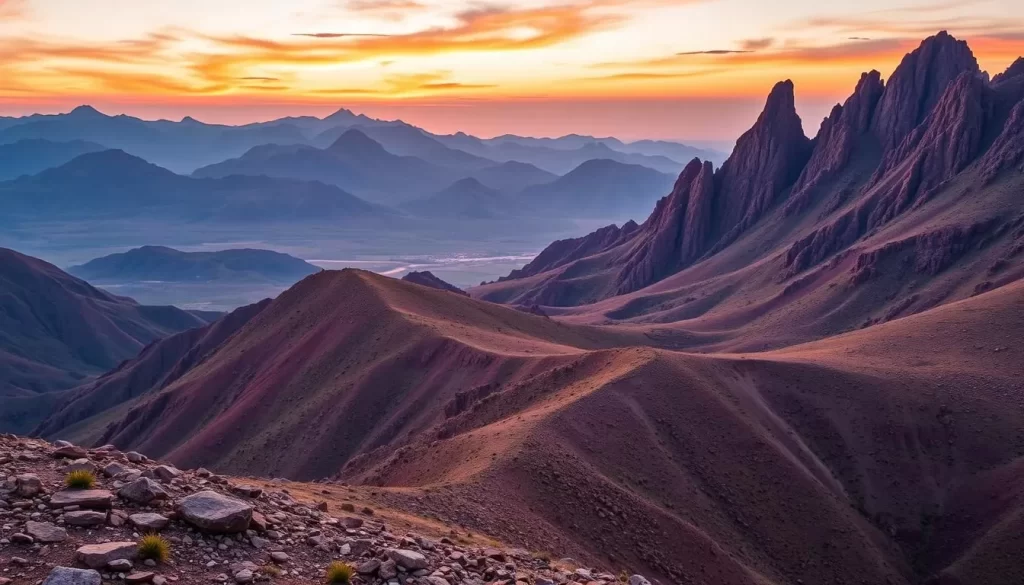
For expeditions to the Tibesti Mountains and desert regions, the cooler months from November to February are ideal. The extreme temperatures and challenging terrain make it essential to plan your trip during this time for a more comfortable and safe experience.
N’Djamena and Lake Chad Region
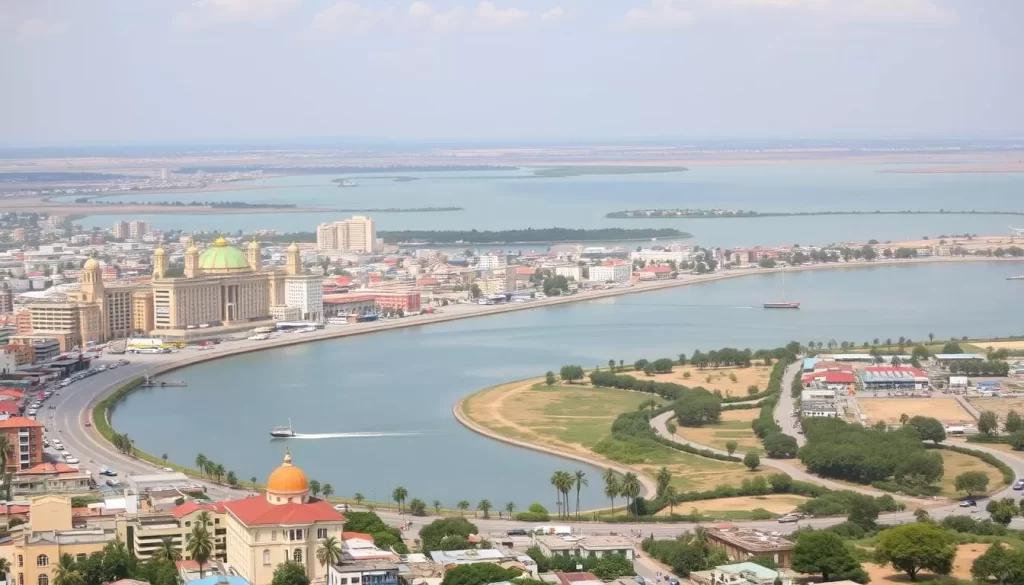
The best time to visit N’Djamena and the Lake Chad region is during the dry season, from October to May. This period offers comfortable temperatures and better road conditions, making it easier to explore the capital city’s cultural attractions and the scenic Lake Chad area.
Month-by-Month Weather Guide for Chad
Understanding Chad’s climate is crucial for planning a successful trip, and this month-by-month guide will help you navigate the country’s diverse weather patterns.
December-January: Peak Dry Season
December and January are characterized by dry and relatively cool weather, making them ideal months for exploring Chad’s diverse landscapes. Temperatures range from 16°C to 35°C, and the clear skies offer excellent conditions for wildlife viewing and desert expeditions.
February-March: Warming Temperatures
As February and March progress, temperatures begin to rise, reaching highs of up to 40°C. However, the dry conditions persist, making it an excellent time for safari experiences and visiting Zakouma National Park.
April-May: Transition Period
April and May mark the transition from dry to wet conditions, with temperatures remaining high. This period brings unique opportunities for witnessing the changing landscapes and preparing for the rainy season.
June-September: Rainy Season
The rainy season brings significant rainfall, with July and August being the wettest months. While this period presents challenges for travel, it also offers lush landscapes and unique cultural experiences.
| Month | Temperature Range (°C) | Rainfall (mm) |
|---|---|---|
| December | 16-35 | 0 |
| January | 16-36 | 0 |
| February | 19-37 | 0 |
| March | 22-40 | 4 |
| April | 24-40 | 14 |

Conclusion: Planning Your Weather-Perfect Chad Adventure
Embarking on a journey to Chad necessitates a deep understanding of its climatic conditions. To maximize your experience, plan your visit during the dry season, from October to March, when weather conditions are most favorable. Whether you’re interested in wildlife safaris, desert exploration, or cultural experiences, Chad has something to offer. Be sure to respect local customs, especially when interacting with communities like the Toubou people. Working with experienced local guides will enhance your adventure, providing protection and insights into this remarkable country.
The above is subject to change.
Check back often to TRAVEL.COM for the latest travel tips and deals.


